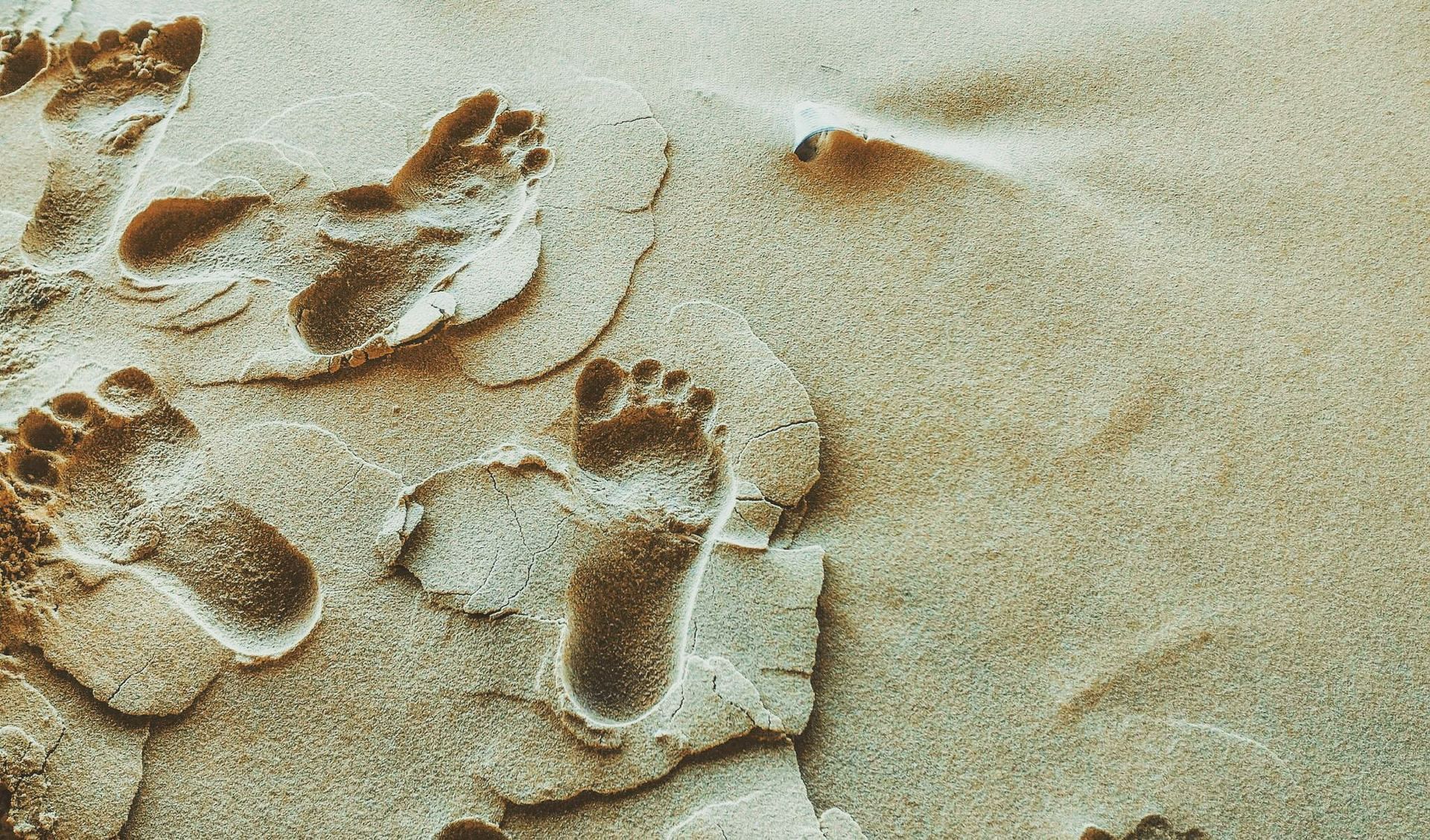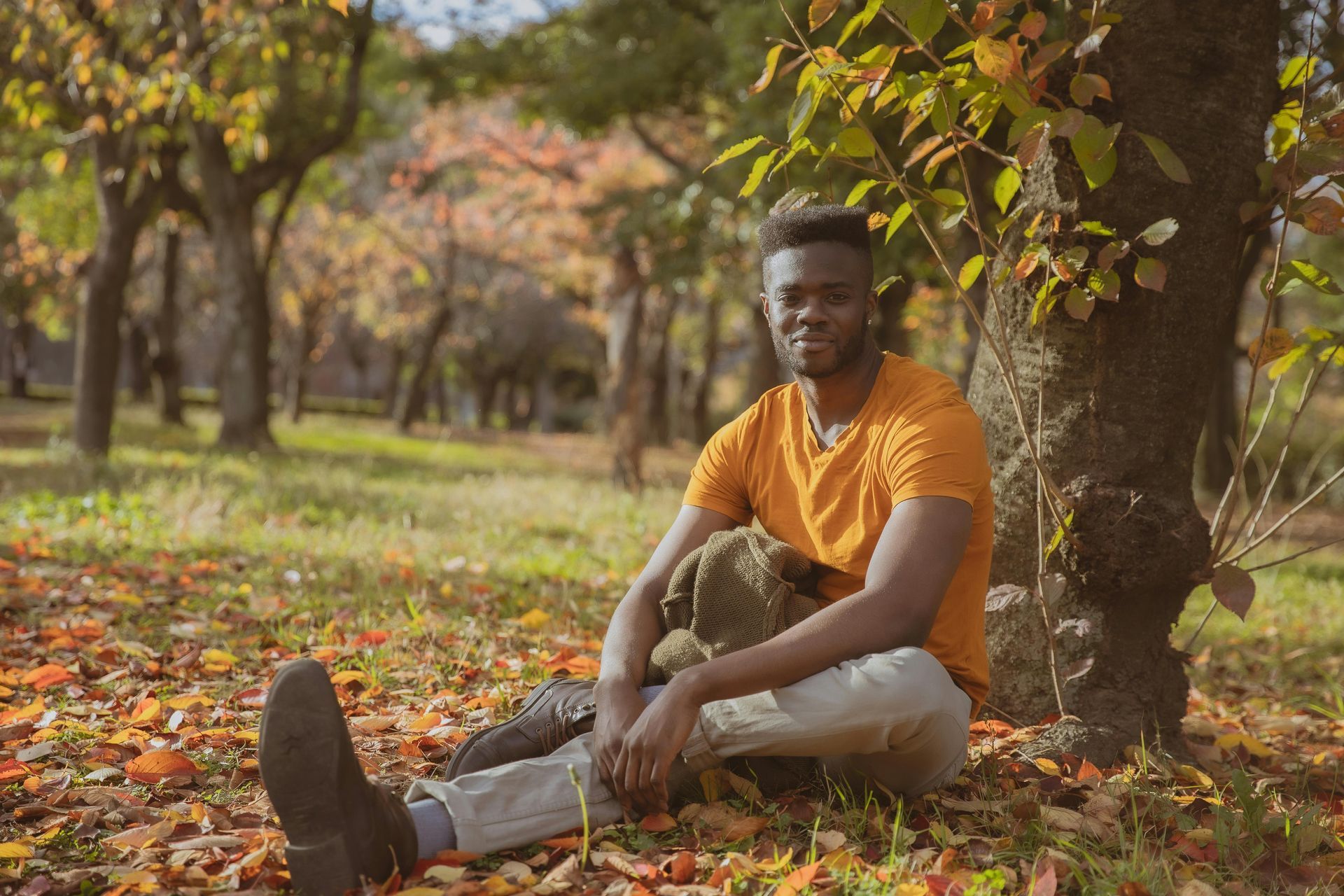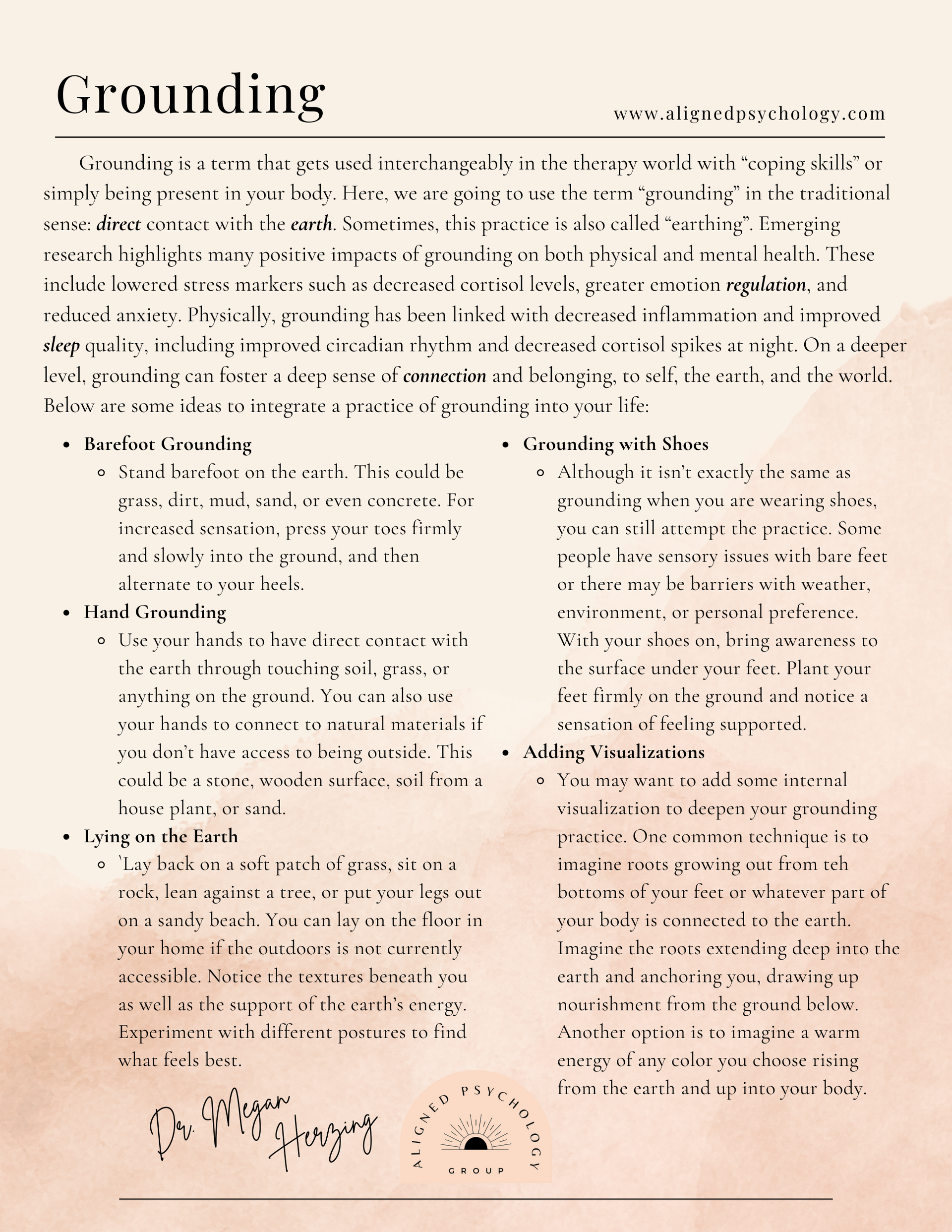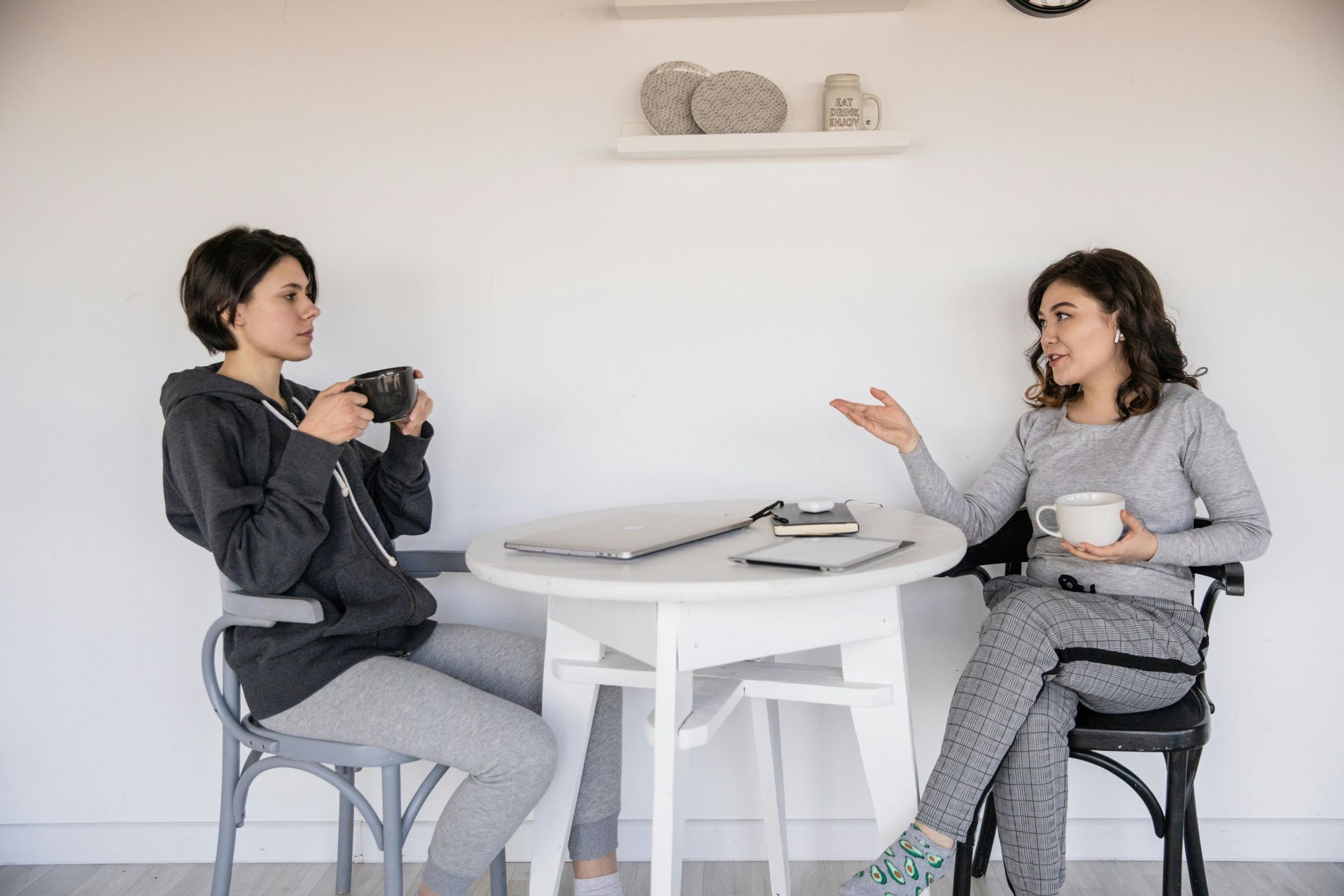Trauma Therapy Homework- Week 15
Week 15: (The Basics)
Grounding
Welcome to Trauma Therapy Homework Week 15! Since last week’s work on Core Self was deep, reflective, and potentially time-consuming, we are going to keep it a bit lighter and easier with this week's resource. This shift is intentional, it is a practice called titration. In trauma therapy, titration helps us balance higher-activation states with lower-activation states, much like pacing yourself in a workout. If you push your muscles hard one day, you might take a rest day or focus on recovery the next. Your brain and nervous system benefit from this same kind of pacing. You can use titration in your personal life as well. The week's homework is focused on grounding. Grounding is a term that gets used a lot in the therapy world. Sometimes, it's used interchangeably with "coping skills" or simply being present in your body. While both of these definitions have value, in this post, we’re focusing on grounding in the traditional sense—direct contact with the earth. Sometimes, this is also called "earthing". Let's explore what grounding means and how you can integrate it into your healing journey.
Grounding in Research
There’s something deeply restorative about connecting with the earth’s energy. Many people report feeling more peaceful and centered after spending time in nature. Emerging research highlights the positive impact of grounding on overall health and well-being. Studies suggest that direct physical contact with the earth’s surface can offer both physical and mental health benefits. These include lowered stress markers such as decreased cortisol levels, a more balanced nervous system response, improved mood, greater emotional regulation, and reduced symptoms of anxiety. Research has shown that individuals feel more calm, balanced, and emotionally resilient when they engage in grounding practices regularly. Additionally, the heightened sensory awareness that comes with grounding can help quiet racing thoughts, reduce rumination, and enhance mindfulness. Physically, grounding has been linked to decreased inflammation and improved sleep quality, better regulation of the circadian rhythm, and lower nighttime cortisol levels. Beyond these benefits, grounding fosters a deeper sense of connection—to the earth, to oneself, and to the world—offering a profound feeling of belonging.

The Power of Barefoot Grounding
One of the simplest and most effective ways to ground yourself is by standing barefoot on the earth. This could be grass, dirt, mud, sand, or even a concrete surface outside. When your skin directly touches the ground, your body connects with the earth’s natural energy. Many people describe an immediate sense of calm and clarity when they take their shoes off and allow their feet to sink into the earth.
A simple technique is to press your toes firmly and slowly into the ground, then shift the pressure to your heels, and then back to your toes. This rocking motion helps bring awareness to your connection with the earth. Another option is to try gently pressing the entire bottom of your foot down into the ground. You don’t need to press hard; just notice your legs slightly pushing your feet down. You can also just notice the weight of your body moving down toward you feet and connecting you to what is beneath you.
Sitting or Lying on the Earth
Another powerful way to ground yourself is by sitting or lying directly on the earth. You can choose a spot outdoors, such as a soft patch of grass, a sandy beach, or even the solid foundation of a rock. If being outside isn’t accessible or comfortable, you can achieve a similar effect indoors by sitting or lying on the floor, focusing on the sensation of support beneath you. If you’re outside, take a moment to notice the textures beneath you—the firmness of the ground, the warmth of the sun on your skin, or the coolness of the earth. As you settle in, imagine releasing tension from your body into the earth. Notice the weight of your body sinking slightly into the surface below, allowing the earth to hold you completely.
You may also experiment with different postures to find what feels best. Sitting cross-legged, reclining with your back against a tree, or lying flat with your arms stretched out can all create different grounding sensations. You might even try pressing your palms into the ground or running your fingers through the grass to enhance the connection. For those who struggle with anxiety or restlessness, lying flat on the ground can be particularly helpful. This position engages the parasympathetic nervous system, signaling to the body that it is safe to relax. Some people find it soothing to place their hands on their stomach or chest, feeling the gentle rise and fall of their breath as they attune to the earth’s natural rhythm. Whether you’re indoors or outdoors, sitting or lying on the ground can provide a deep sense of connection—not just to the earth but to yourself. It’s a reminder that you are supported in the present moment.
Using Your Hands to Ground
While we often think of grounding through our feet, some people find that using their hands can feel just as powerful. Our hands are highly sensitve, filled with nerve endings that allow us to explore textures, temperatures, and sensations in a deeply personal way. By intentionally engaging our hands in grounding practices, we can create a direct and conscious connection to the present moment, offering our nervous system a sense of stability and calm.
One way to do this is by placing your hands directly on the earth—resting them on grass, pressing them into soil, or tracing the rough bark of a tree. As you do this, take a moment to notice the sensation beneath your fingertips. Is it cool or warm? Rough or smooth? Soft or firm? Engaging your senses in this way can help pull you out of anxious thoughts and into the present experience of touch. Some people find it soothing to dig their hands into dirt or sand, feeling the grains move between their fingers, offering a gentle, tactile reminder of connection to the earth. If you're indoors, you can create a similar effect by placing your hands on grounding materials like wood, stone, or even water. Even houseplants can be used for grounding—gently pressing your palm against a leaf, feeling the veins, or cradling a pot of soil can offer a soothing sense of being close to nature.

Grounding with Shoes On
If you're not in a place where you can be barefoot, that’s okay! Or, if barefoot grounding isn't an option—whether because of the weather, environment, or personal preference—you can still practice grounding with shoes on by bringing awareness to the surface under your feet. Whether you're standing, sitting, or lying down, take a moment to notice the sensation of the ground supporting you. Notice how the earth is underneath those surfaces. The earth is always there, holding you up, offering you a place to exist and be present.
Visualizations to Enhance Grounding
Adding visualization to your grounding practice can deepen the experience. One common technique is to imagine roots growing down from the bottoms of your feet or whatever part of your body is connecting to the earth. Imagine the roots extending deep into the earth. Picture these roots anchoring you, providing stability, and drawing up nourishment and strength from the ground below. Another visualization is to imagine warm energy of any color you choose rising from the earth, flowing into your feet, moving up through your legs, and spreading throughout your body. This energy can represent stability, calm, or even healing.
Final Thoughts
Grounding is an accessible, simple practice that can be integrated into daily life. Whether you're barefoot on the grass, pressing your feet into the floor, or placing your hands on a natural surface, taking a moment to connect with the earth can help you feel more present, regulated, and supported. Trauma can make us feel disconnected from ourselves and our surroundings, but grounding offers a way to reestablish that connection in a gentle, healing way. If you try these techniques, notice how they make you feel. Pay attention to the subtle shifts in your body and mind. Over time, grounding can become a valuable tool in your trauma recovery journey—one that reminds you, in the most literal sense, that you are supported, held, and connected to something greater.
FREE Downloadable Handouts
Click this LINK for free access to downloadable PDFs from the Trauma Therapy Homework Series. You’ll be directed to my Google Drive folder, where you can explore all the handouts created so far. You can choose between a digital format for easy viewing on your device or a printable version if you prefer a hard copy.
Here is a preview of this week's handout! Click the link above to get your own free pdf copy.


ABOUT THE AUTHOR
Dr. Megan
Megan Herzing PsyD, Licensed Professional Clinical Counselor, specializes in trauma therapy and creating a safe, supportive space for healing. She integrates evidence-based modalities, including EMDR, Internal Family Systems (IFS), somatic therapy, and Emotionally Focused Therapy (EFT), to address the mind-body connection and empower clients on their journey to wellness. With extensive experience treating complex PTSD, anxiety, attachment injuries, and dissociation, she believes in the power of self-compassion and authentic connection to facilitate lasting change. Drawing from her own healing journey, she brings empathy and lived experience to her work, honoring each client’s unique path toward growth and resilience.
Thank you for being part of a community of humans that deeply cares about healing.
We are honored that you stopped by and hope our resources will continue to bring value to your life.
We are accepting new clients in California, and referrals are always appreciated.












